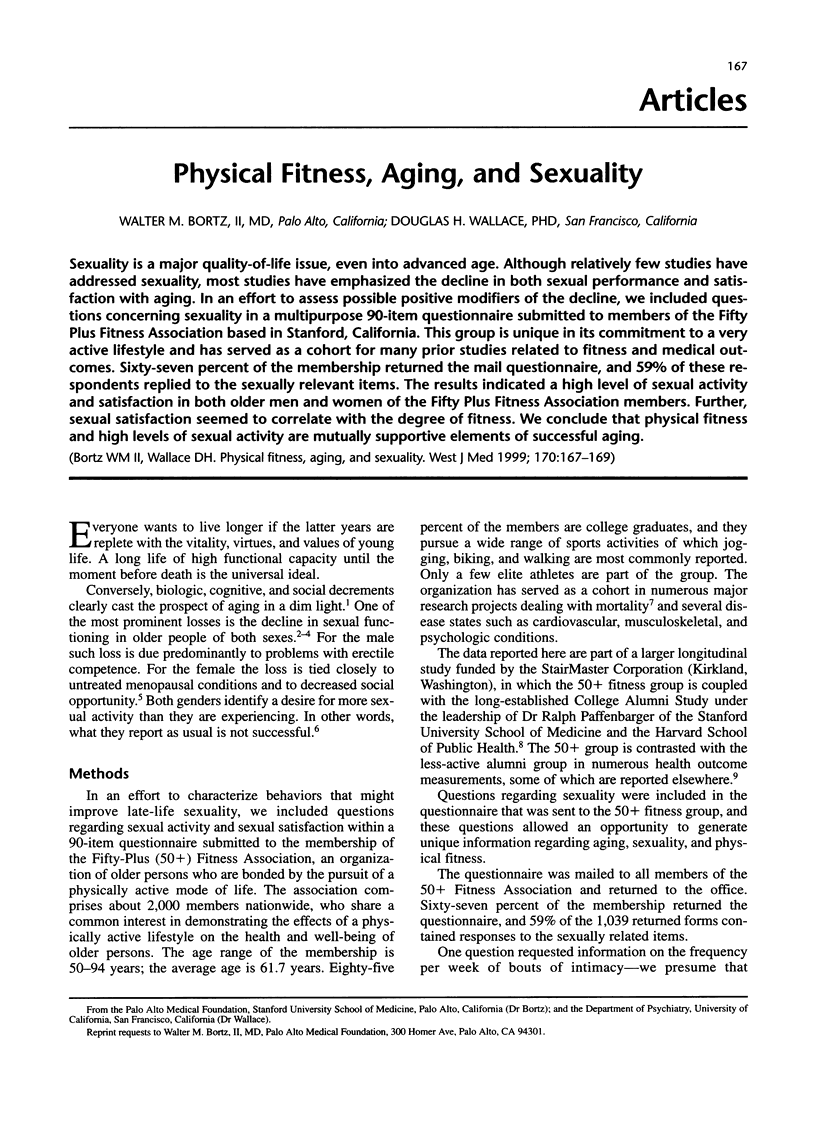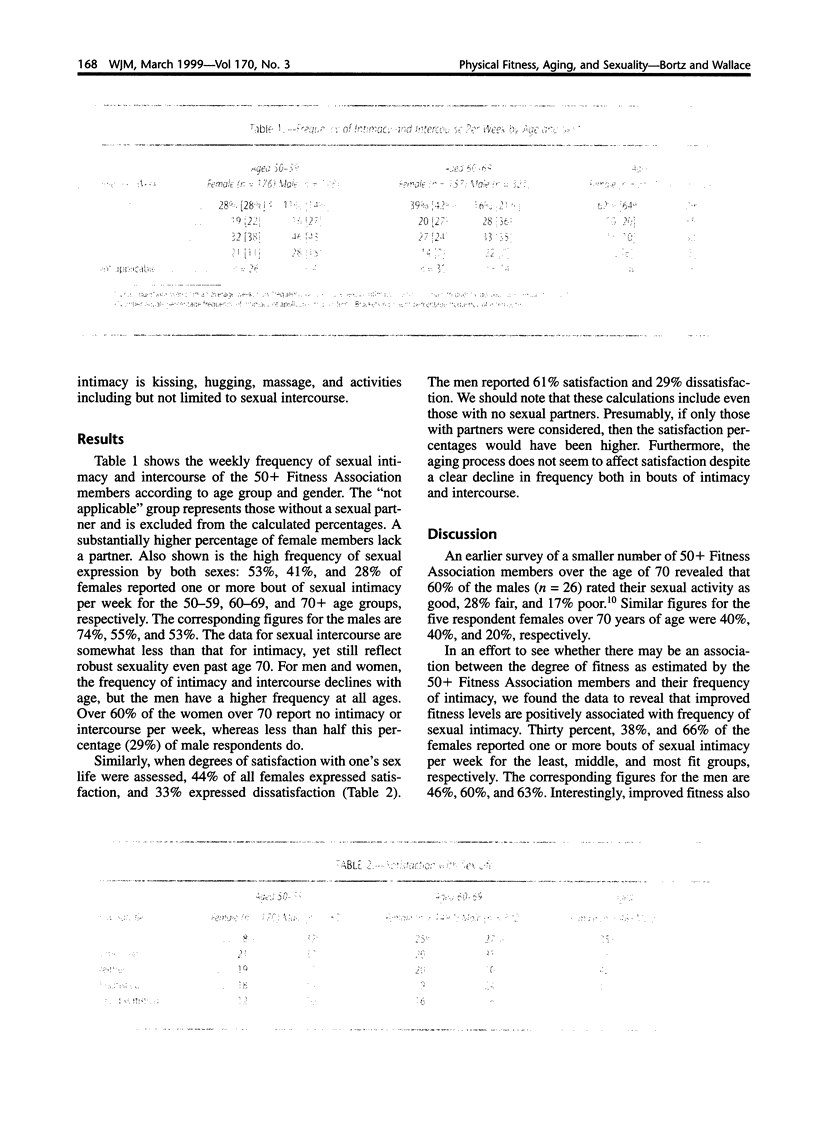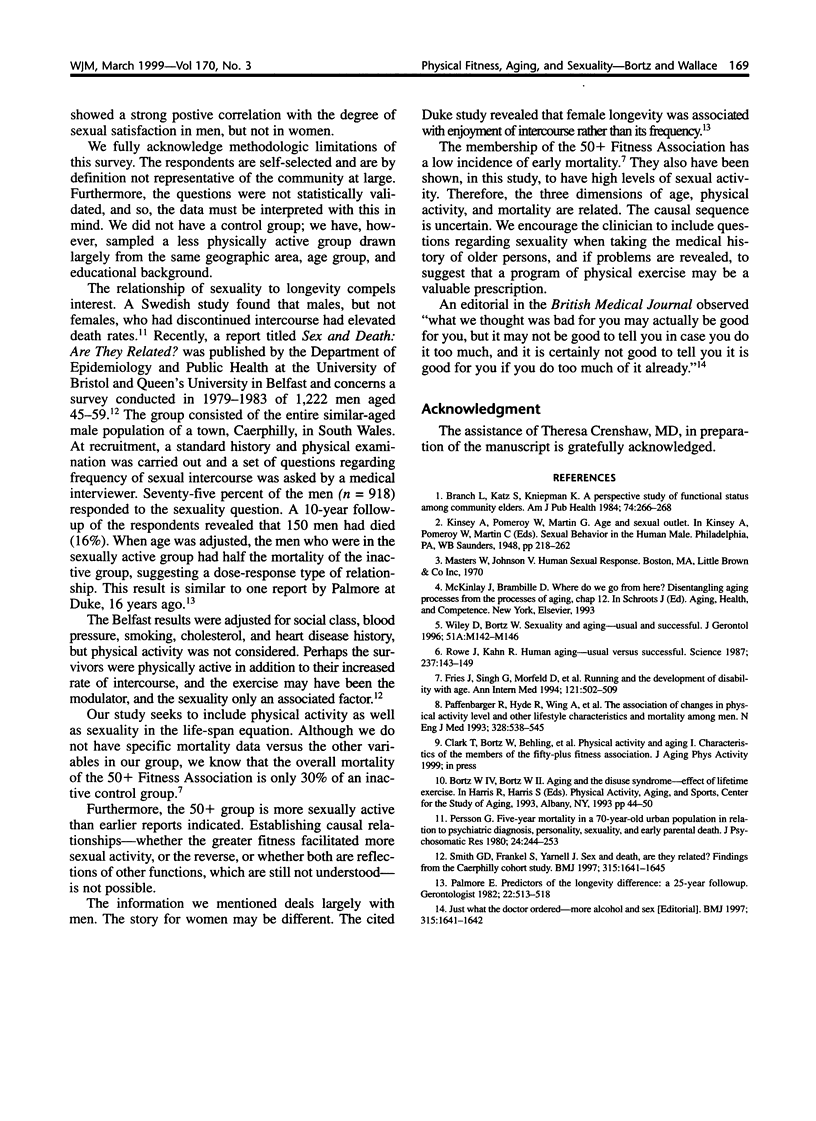Abstract
Sexuality is a major quality-of-life issue, even into advanced age. Although relatively few studies have addressed sexuality, most studies have emphasized the decline in both sexual performance and satisfaction with aging. In an effort to assess possible positive modifiers of the decline, we included questions concerning sexuality in a multipurpose 90-item questionnaire submitted to members of the Fifty Plus Fitness Association based in Stanford, California. This group is unique in its commitment to a very active lifestyle and has served as a cohort for many prior studies related to fitness and medical outcomes. Sixty-seven percent of the membership returned the mail questionnaire, and 59% of these respondents replied to the sexually relevant items. The results indicated a high level of sexual activity and satisfaction in both older men and women of the Fifty Plus Fitness Association members. Further, sexual satisfaction seemed to correlate with the degree of fitness. We conclude that physical fitness and high levels of sexual activity are mutually supportive elements of successful aging.
Full text
PDF


Selected References
These references are in PubMed. This may not be the complete list of references from this article.
- Branch L. G., Katz S., Kniepmann K., Papsidero J. A. A prospective study of functional status among community elders. Am J Public Health. 1984 Mar;74(3):266–268. doi: 10.2105/ajph.74.3.266. [DOI] [PMC free article] [PubMed] [Google Scholar]
- Davey Smith G., Frankel S., Yarnell J. Sex and death: are they related? Findings from the Caerphilly Cohort Study. BMJ. 1997 Dec 20;315(7123):1641–1644. doi: 10.1136/bmj.315.7123.1641. [DOI] [PMC free article] [PubMed] [Google Scholar]
- Fries J. F., Singh G., Morfeld D., Hubert H. B., Lane N. E., Brown B. W., Jr Running and the development of disability with age. Ann Intern Med. 1994 Oct 1;121(7):502–509. doi: 10.7326/0003-4819-121-7-199410010-00005. [DOI] [PubMed] [Google Scholar]
- Paffenbarger R. S., Jr, Hyde R. T., Wing A. L., Lee I. M., Jung D. L., Kampert J. B. The association of changes in physical-activity level and other lifestyle characteristics with mortality among men. N Engl J Med. 1993 Feb 25;328(8):538–545. doi: 10.1056/NEJM199302253280804. [DOI] [PubMed] [Google Scholar]
- Palmore E. B. Predictors of the longevity difference: a 25-year follow-up. Gerontologist. 1982 Dec;22(6):513–518. doi: 10.1093/geront/22.6.513. [DOI] [PubMed] [Google Scholar]
- Rowe J. W., Kahn R. L. Human aging: usual and successful. Science. 1987 Jul 10;237(4811):143–149. doi: 10.1126/science.3299702. [DOI] [PubMed] [Google Scholar]
- Wiley D., Bortz W. M., 2nd Sexuality and aging--usual and successful. J Gerontol A Biol Sci Med Sci. 1996 May;51(3):M142–M146. doi: 10.1093/gerona/51a.3.m142. [DOI] [PubMed] [Google Scholar]


